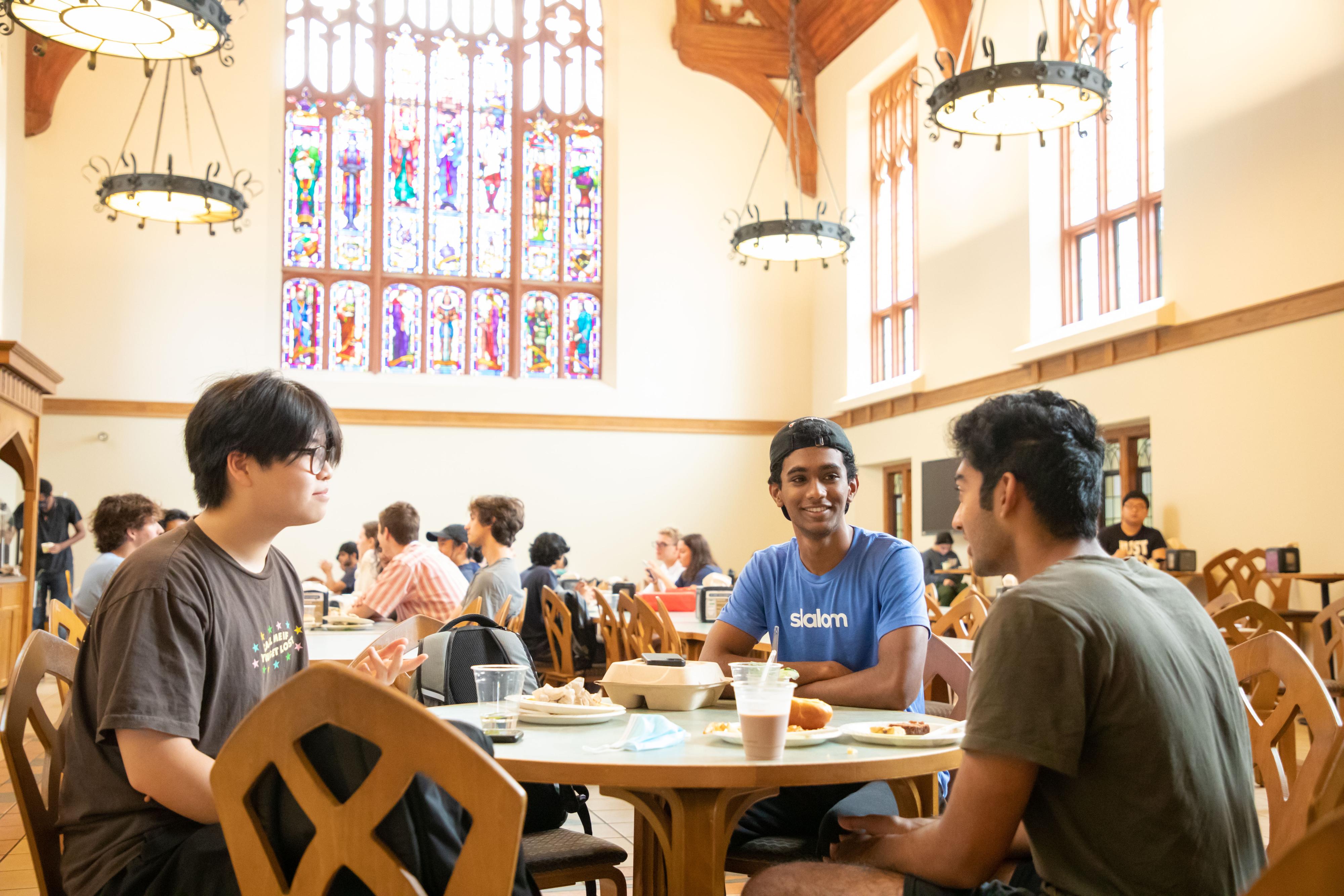Blank Space (medium)
(text and background only visible when logged in)
(text and background only visible when logged in)

Blank Space (medium)
(text and background only visible when logged in)
(text and background only visible when logged in)
Program Layout
Number of Students: 10-20
- 5 - RAs
- 5 - Freshman
- 5 - Upper-Classmen
- 5 - Graduate Students
Meeting Frequency: Once per Month
Commitment: Minimum 1 semester, no more than 2 consecutive semesters
Compensation: Free Meal at Meeting

Objectives
-
Gather feedback and insights from students to improve the overall dining experience on campus.
-
Enhance student engagement and involvement in decision-making processes related to dining options and services.
-
Foster a sense of community and collaboration among students, dining staff, and administration.
-
Implement student-driven initiatives to address concerns, promote sustainability, and enhance diversity in dining offerings.
Structure
- Setup: The Board will consist of 10-15 students representing diverse backgrounds, academic years, and dining preferences.
- Leadership: Two Co-Chairs will be appointed to help lead the Board, plan and facilitate meetings, and serve as liaisons with Tech Dining's Director of Customer Experience.
- Meetings: Monthly meetings will be held during the academic year, with additional ad-hoc meetings or subcommittee meetings as needed.
- Communication: Board members will communicate via email, a dedicated online platform or group chat, and periodic in-person meetings.
Activities
- Feedback Collection: Conduct surveys, focus groups, and suggestion campaigns to gather feedback from students on dining options, menus, hours of operation, and service quality.
- Review and Analysis: Analyze feedback received from students, identify common themes, concerns, and opportunities for improvement, and prioritize areas for action.
- Initiative Development: Collaborate with dining administration to develop student-driven initiatives, such as theme nights, sustainability programs, cultural events, or menu enhancements.
- Communication and Advocacy: Serve as advocates for student interests and concerns related to dining, communicate updates and initiatives to the student body, and solicit ongoing feedback.
- Evaluation and Reporting: Monitor the progress and impact of implemented initiatives, evaluate outcomes against established objectives, and report findings to dining administration and the student body.
Outcomes
- Improved Dining Experience: Enhanced dining options, menus, and services that better meet the needs and preferences of students.
- Increased Student Engagement: Greater involvement and participation from students in shaping dining policies, programs, and initiatives.
- Stronger Community Connections: Enhanced sense of community and collaboration among students, dining staff, and administration.
- Tangible Initiatives: Implementation of student-driven initiatives that address concerns, promote sustainability, and celebrate diversity in dining offerings.
- Transparent Communication: Improved communication channels between students and dining administration, with regular updates, feedback mechanisms, and opportunities for dialogue.